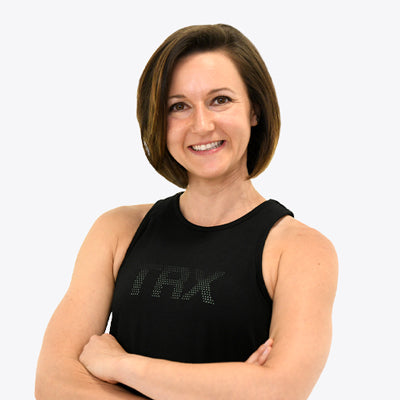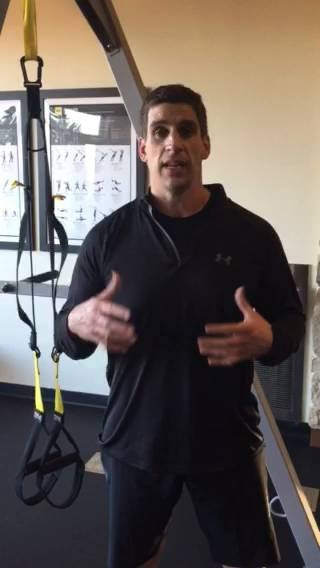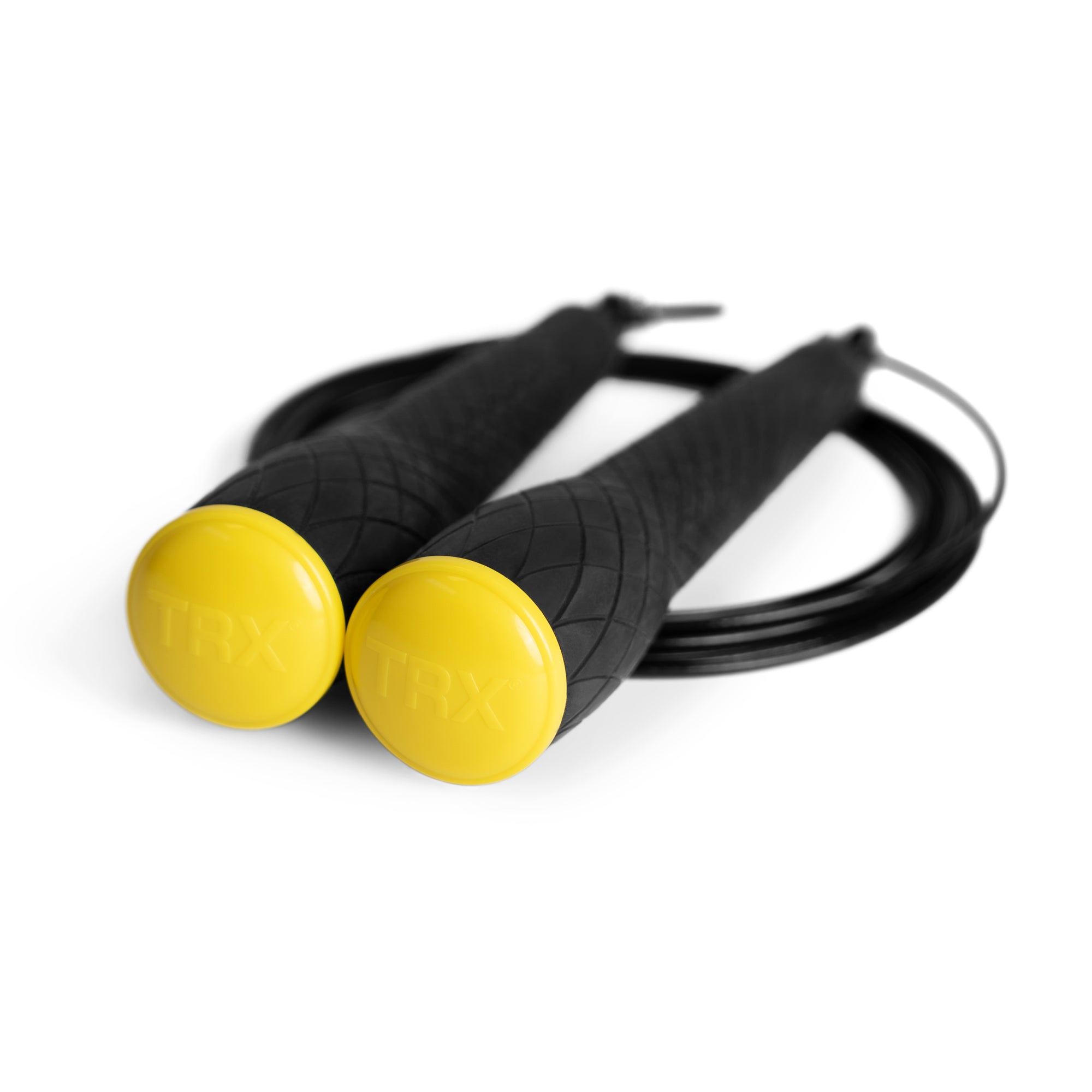Krystal Say can remember her first handstands. She was playing outside as a child; tumbling, cartwheeling, and balancing. Even as an adult—with a career as a yoga instructor and TRX expert— she still sees the joy in handstands. Krystal loves tapping into that “childlike nature of freedom, of breaking the rules, of not having fear.” She also loves helping other people find their own joy in handstands. And she knows the fastest way to get someone off their feet and into a handstand is with the TRX Suspension Trainer™.

Yup, TRX loves yoga
We get it. TRX® may not be the first name that comes to mind when you think of yoga. Created by a former Navy SEAL and used by professional athletes across the globe, people understandably associate TRX with power or tenacity. Yoga, by contrast, seems soft, passive. So let’s clear a few things up.
First, the TRX Suspension Trainer truly is a tool that anyone, with any body type, can use. Yes, strong, competitive people like the Suspension Trainer. So do the people who are just trying out squats for the first time. Going through physical therapy after a surgery? You’ll probably use a Suspension Trainer at some point in your recovery. Eight months from retirement? Eight months pregnant? Hook up your Suspension Trainer, and let’s work.
And yogis? They’re tough as nails. It takes a lot of effort to flow gracefully, but it’s first and foremost work. The amount of mobility and body awareness yogis possess is staggering. If you think yoga is easy, try a handstand.
Better yet, let’s try a TRX Handstand together.

More than just core
A handstand is “100% total body integration,” Krystal said. While there’s a common misconception that handstands hinge on upper body strength, Krystal explained that yoga is more focused on muscular stability than muscle mass. To lift yourself into a handstand, you have to stabilize the shoulders and upper back muscles, along with the core—really everything surrounding the spine. On top of that, you have to brace your legs.
“You can't relax your legs and let them be wet noodles. It is total body integration from the soles of your feet, to the tips of your fingers. You have to have a connection to be able to raise and contract your muscles’ to create a sense of stability,” she said.
How the TRX Suspension Trainer supports handstands
“When we move in a yoga pose, when we move in life, we create habits,” Krystal explained. “But when we do create these movement patterns, the same percentage of muscle fibers are always turned on. So we're really only tapping into a small percentage
“The straps—as an outside stimulus—speak to your central nervous system; they enable us to feel a movement in a brand new way. So in essence, we can recruit new muscle fibers. We can let the ones that are always working, relax a little bit. We can recruit and turn on more. So we're creating different pathways in which we move, decreasing central nervous system fatigue, reserving our proprioceptive responses or habits. We're not just going to continue to use muscles. We're going to be able to connect mind, body into new muscle fibers, new pathways, to better enhance our opportunity to get into handstand safely.”
Krystal Say’s Step-by-Step Guide to TRX Handstands
You gotta walk before you run, and you gotta flow before you invert. Krystal’s path to TRX Handstands includes a progression designed to activate each muscle group in the body before bringing all the groups together for a handstand.
Krystal’s process is for a traditional TRX Handstand, with one foot threaded through both of the footcradles, but you’ll warm up with a standard TRX Plank—straps adjusted to mid-calf length with one foot in each foot cradle.

TRX Plank
“I want you to feel your hands push on the floor, your feet into the straps. I need you to make that total body connection. I need you to feel the muscles in your legs, squeeze in your core, squeeze in your upper body,” Krystal said.
Next, you’ll drop your knees back down to the floor for spine mobility work. Cow and cat tilts—which are anterior and posterior tilts of the pelvis, respectively—can help you see what type of range of motion you have in your pelvis. Are your hamstrings tight? Are you stuck in your shoulders?
Cow and Cat
“A handstand needs both cow and cat. When your hands are on the ground and you're walking your feet to your hands you're pushing your hands [to the ground], you want the shoulder blades to separate and the spine to round—that's a little bit of an upper body cat tilt—but then you need through the spine to translate and shift into a cow tilt so that you can flatten the back, and get the hips to stack over the shoulders. If you stay in cat tilt, hips will never stack over shoulders,” Krystal advised.

TRX Pike
The third stage of Krystal’s flow to handstand is a TRX Pike, ensuring that your hands are stacked under your shoulders. (Krystal says many people make the mistake of setting their hands too wide, but that causes them to overuse their lats.)
“When you pike, then it becomes hips over shoulders, over wrists… I want that little bit of the rounding of the shoulders—the cat tilt in the shoulders and the cow tilt interior—tilt up, pull the hips up over the shoulders, eventually working the leg straight. That might not be
accessible, at first, if the hamstrings are tight. So there's the next “aha” moment. ‘How come my hips can't stack over my shoulders?’ Is it shoulder instability or tightness or is it hamstring tightness?”
After the basic progressions through TRX Plank, cat, cow, and TRX Pike, stand side-facing the anchor point, and slip both foot cradles over the foot that’s closer to the wall. It’s handstand time!

The TRX Handstand
Still standing side-facing, apply pressure through the foot in the cradles. Then bring your hands to the ground. Bend the knee of the suspended leg, heel to hips, and spin your hands to face the anchor point.
Now the foot in the cradles is facing away from the anchor point, and you should be in a one legged down dog, i.e., one leg in the air. Walk your hands away from the anchor point, hopping the free foot on the floor, also away from the anchor point until you’re as vertical as you can get.
How vertical can you go? That depends on your shoulder stability and hamstring flexibility.
Press your palms into the ground and the suspended foot into the foot cradle, and float the free foot into that air. It’s okay if you’re not 100% vertical yet. “I just want you to build confidence, getting upside down,” Krystal said.
Play with that handstand, dropping the free leg down for a toe tap, if you need it. When you’re ready to come down, you can either (1) drop the free leg and start walking forward with your palms (and hopping forward with the free leg), or (2) drop the free leg back to the floor, take a couple of steps forward with your palms, and then bend the knee of your suspended leg. If you choose the second option, keep in mind that the foot cradles will slip off your suspended foot as soon as you cease applying pressure through the bridge of that foot. In other words, you might also need to duck quickly to avoid getting hit by your own foot cradles.

Want more TRX for Yoga?
Handstands may have received the star treatment today, but there are plenty of other yoga postures that you can complement with the TRX Suspension Trainer. Drop into class with Krystal Say four times each week in TRX Training Club℠—don’t forget, your first week is on us!—or cue up a class anytime with the TRX Training Club on-demand library. (Don’t worry, there’s a TRX Handstand tutorial, too.)
Looking for more of a TRX for Yoga workshop? Try our TRX Yoga Foundations Course.
Yes, handstands have become a kind of fitness litmus test for overall mobility and strength, but they’re also a lot of fun. “I pursue a handstand because of the exhilaration that I feel in my physical body, the sensations it elicits,” Krystal said. “I think at first people go at it because it looks cool, but then all of a sudden, when they try it themselves, they realize that it's not easy. It’s something tangible that people can work on.”



